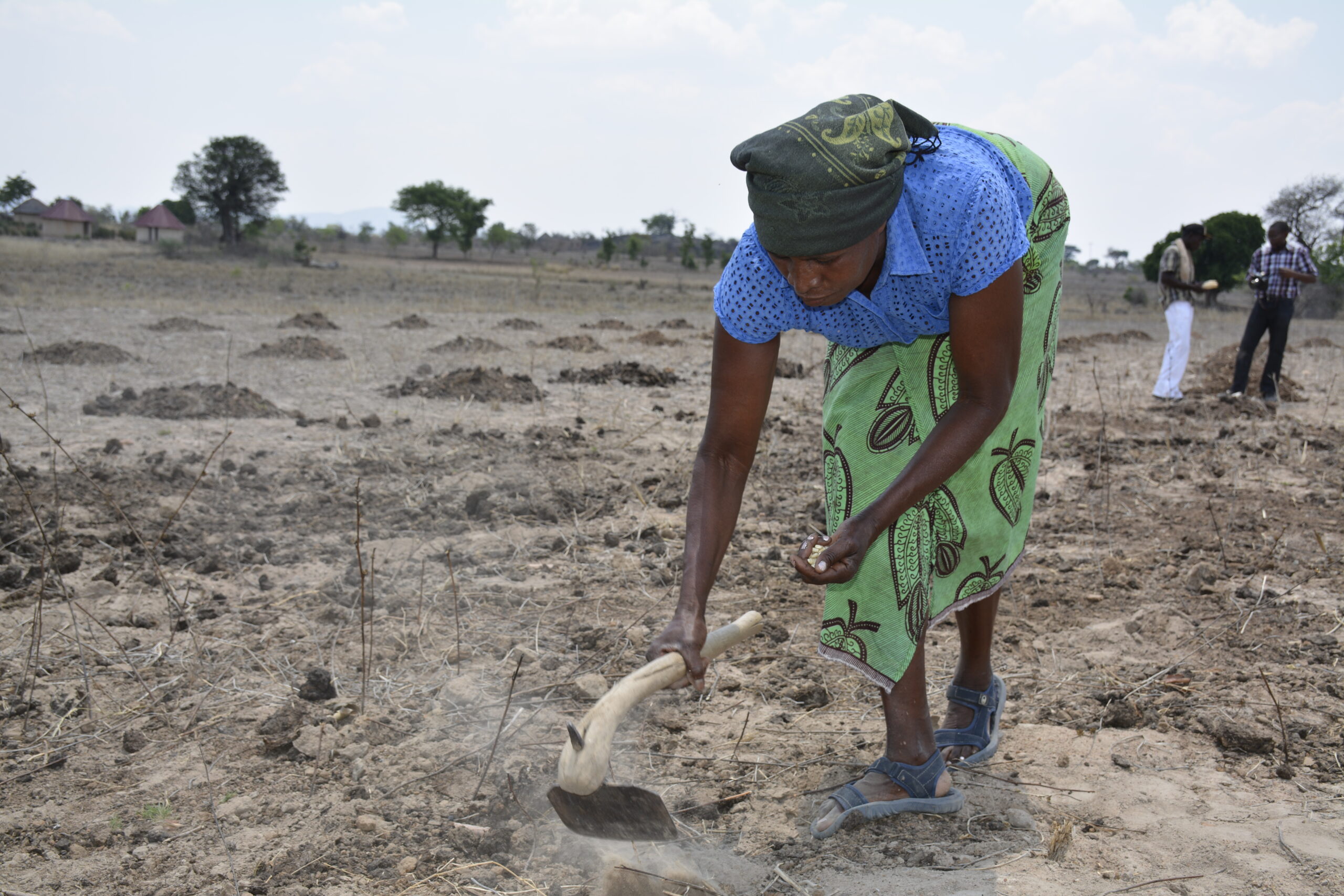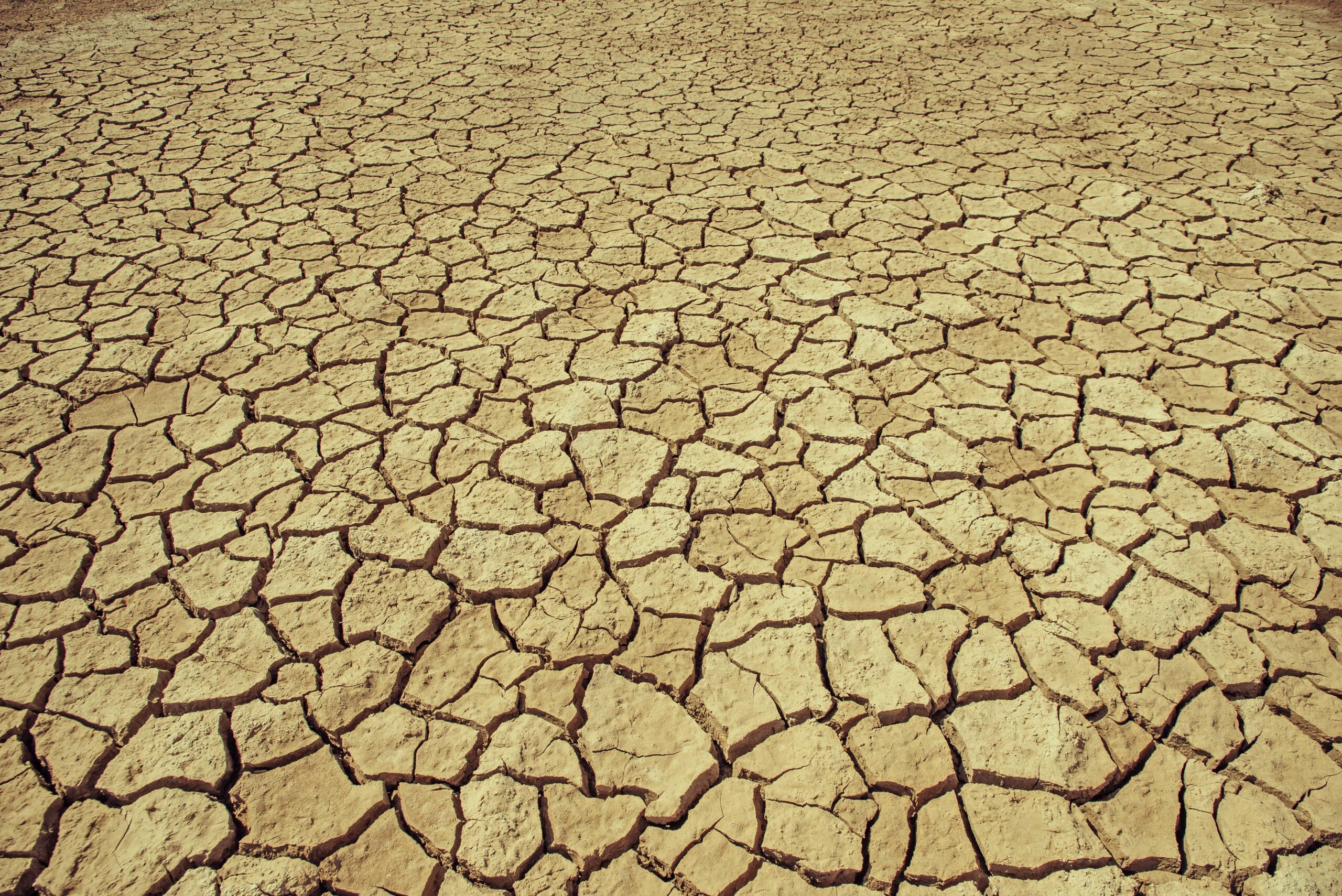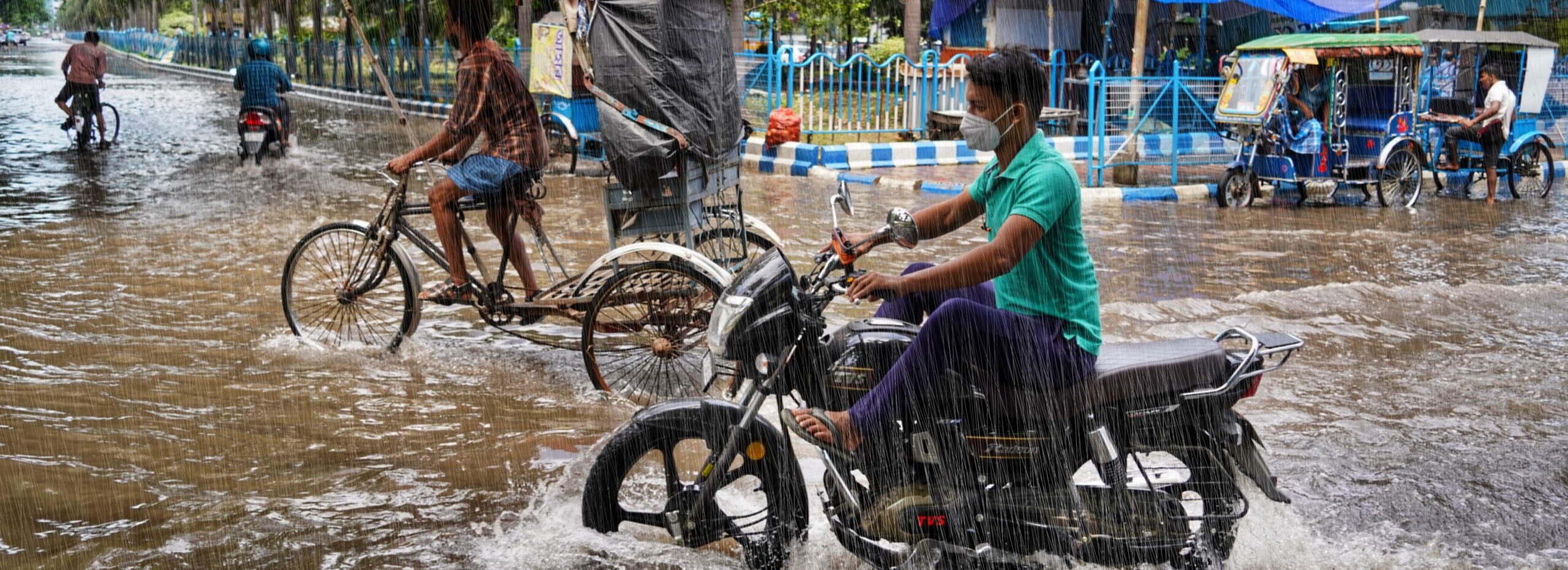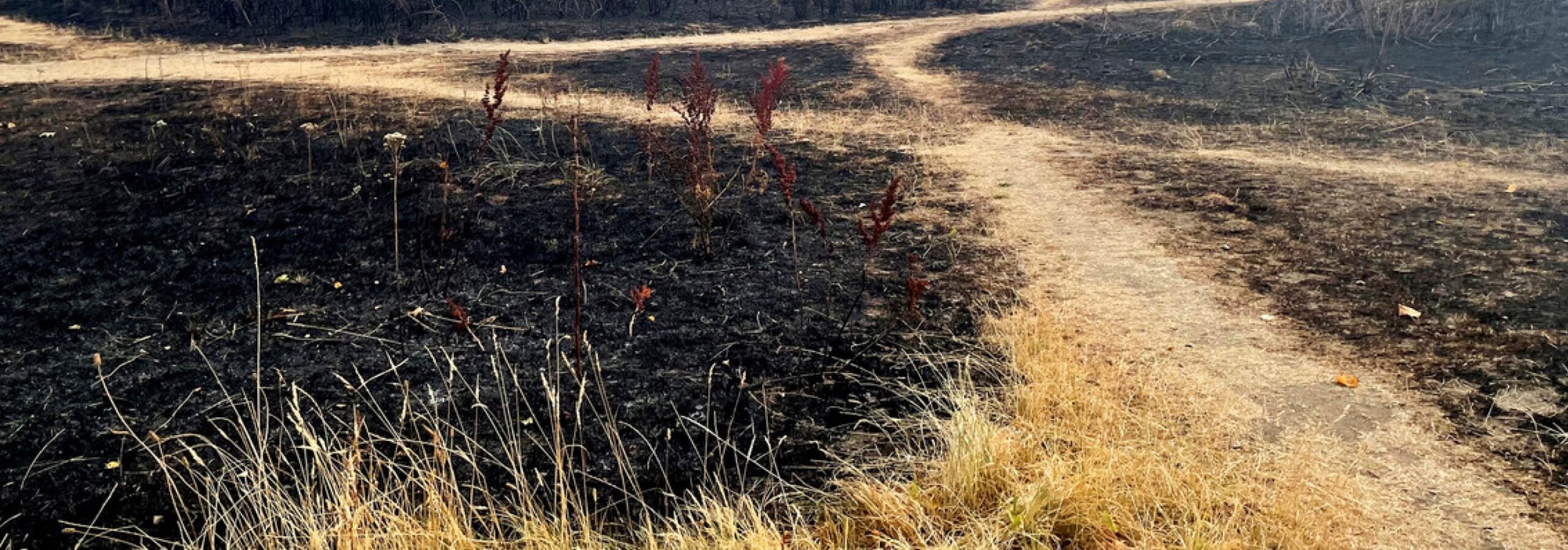The drought also led to dramatic water shortages, particularly in Zambia and Zimbabwe, where water supply infrastructure is underdeveloped. As a consequence, the countries have been battling major outbreaks of cholera and other waterborne diseases. Additionally, the affected countries in southern Africa face increased risk of severe food insecurity between the current and the next rainy season.
Years with a positive phase of the El Niño Southern Oscillation (ENSO) have been associated with droughts in that region in the past, but impacts have not been homogenous, with some El Niño events leading to droughts while others did not. This is because other climate modes of variability such as
Indian Ocean Dipole and Subtropical Indian Ocean Dipole play a critical role in the rainfall amount and distribution over the affected region.
Furthermore, human-induced climate change has been found to increase aridity in some regions in Southeastern Africa, but studies encompassing the countries affected by the 2024 drought, which has been reported to be the worst on record in parts of Zambia and Zimbabwe, are sparse and often focus on much larger regional averages.
Scientists from Zambia, Botswana, Kenya, Mozambique, South Africa, the Netherlands, Sweden, and the United Kingdom collaborated to assess to what extent the 2024 ENSO state as well as human-induced climate change altered the likelihood and intensity of the low rainfall that led to drought, as well as the increase in evaporation due to climate change, exacerbating drought severity.
We focus the analysis on the most affected countries, Zimbabwe, Botswana, Zambia and Mozambique but only the Southern parts for the last two countries to study a climatologically homogeneous region. The temporal focus is December to February (DJF), the peak of the rainy season in the region.
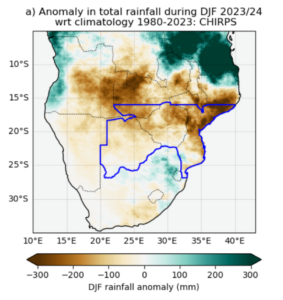
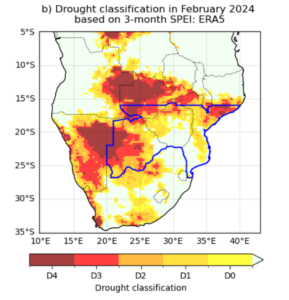
Main findings
● Reliance on rain-fed subsistence crop production and drought-sensitive water sources result in chronic high vulnerability to rainfall anomalies, and limited coping capacity.
● Multiple drivers contributed to the currently high, and rising, food insecurity and malnutrition levels including several years with high food prices, ongoing recovery from floods, as well as agricultural pests and diseases.
● High deforestation rates are a major driver of environmental degradation across the countries, exacerbating risk and impacts associated with drought.
● Using four different observational data products we find that droughts such as this one are expected to happen in today’s climate about once every decade. However, when we consider the effect of El Niño, we find that these droughts are twice as likely to occur in El Niño years. Thus El Nino is a key driver of the 2024 event.
● To analyse the role of human-induced climate change we first looked at the relationship between global warming and rainfall anomalies in observation-based data products. We find that as global temperatures increase, rainfall in DJF also increases. This means that in the current climate, with 1.2ºC warming, droughts such as this one are actually less likely than in a cooler, pre-industrial climate. This finding is consistent with previous studies that show wetter conditions in DJF that contrast with drying in the region earlier in the season, between the months of September and November).
● To further evaluate the role of climate change in the current drought we combined the observations with climate models. The models that passed the model evaluation do not show a significant relationship between rainfall and global warming levels with increasing global temperatures.
● The analysis also indicates that with further global warming of up to 2ºC there will be no significant change in the likelihood of low rainfall in DJF as observed in the region in early 2024.
● Repeating all the analysis for the effective precipitation, taking evapotranspiration into account and only looking at water that is actually available for plants, we find very similar results.
● In summary, our analyses show that El Nino significantly increases the likelihood of such a drought to occur, while climate change did not emerge as the significant driver influencing assessed drought in the affected countries.
● As El Nino events will continue to occur in a warming climate it is important to increase resilience to droughts that will continue to occur frequently.
● Countries in the region have varying levels of development, infrastructure, and governance systems that impact their ability to respond to the drought. For example Botswana is relatively more developed than the other countries in the study and its economy and people are less reliant on rain-fed agriculture, resulting in fewer impacts.
● Maintaining robust traditional land governance systems with appropriate integration into modern frameworks appears crucial for sustainable land management and reducing drought vulnerability to southern Africa.
● Effective early warning systems, anticipatory action, and coordinated emergency response efforts are in place, and could be further strengthened by commitments for shock responsive social protection systems.

